Some Military Glyphs
Sutton Glyphs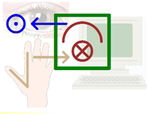
Military Chat?
Some Military Glyphs
Air Traffic Control Glyphs
Bunker and Targeting Glyphs
Where no Pen has gone, Before
Hybrid Visual Language System
Proposed Bliss Software
The following glyphs in the left column were lifted from the Fort Sill website for comparing to Blissymbolics methods for displaying the same information, but with an important benefit: standardization across all domains. A glyph designer in any department of the military, using these methods, could work independently designing glyphs for their department, and if they remain true to the Bliss assignment of meaning to each elemental glyph, cross-domain/department conficts would be exceedingly rare. There is very little glyph polysemy in the language, and we should strive to keep it that way.
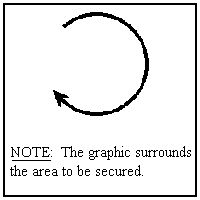 |
The Fort Sill glyph on the left is nearly identical to the Bliss glyph on the right. But the Bliss glyph means simply: "to surround or encircle", with no indication at this point that the area is necessarily to be "secured". In nonlinear Blissymbolics, "surround and secure" would be indicated as below with "secure" defined by the container (bowl, vessel) glyph  and the protection (roof) glyph and the protection (roof) glyph  as "contain and protect": as "contain and protect": 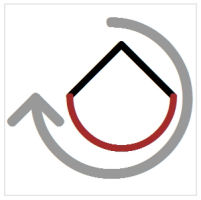
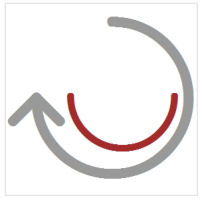  glyph element. The beauty of using an elemental approach to visual language is the ability to make small modifications to meaning by modifying one elemental part of an overall glyph instead of going back to the drawing board all the time. glyph element. The beauty of using an elemental approach to visual language is the ability to make small modifications to meaning by modifying one elemental part of an overall glyph instead of going back to the drawing board all the time.
|
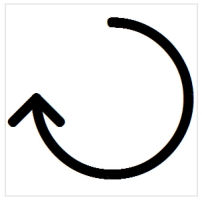 |
In the Fort Sill glyphs, "surround" seems to apply to surrounding an area of a map with a glyph, not surrounding actual territory prior to securing or containing, etc, but it could imply both.
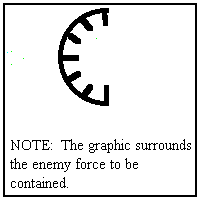 |
To "surround and contain opposition" forces simply add the glyph for opposition  which is derived from one of the two relation which is derived from one of the two relation  glyph elements in Bliss. In my opinion, the Fort Sill glyph on the left breaks consistency with similar meaning glyphs, yielding a less standardized, integrated glyph system, and weakens potential for having a universal cross-domain system. glyph elements in Bliss. In my opinion, the Fort Sill glyph on the left breaks consistency with similar meaning glyphs, yielding a less standardized, integrated glyph system, and weakens potential for having a universal cross-domain system.
But the Fort Sill glyph is not entirely inconsistent with Bliss, since its basic form is the container |
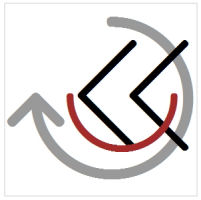 |
Since the Fort Sill glyphs are apparently intended to actually surround areas on a map, the Bliss glyphs above (which are optimized to be reducable to icon size) could be modified to empty the inner space of each glyph, allowing other map information to come through:
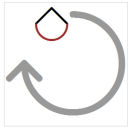
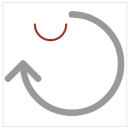
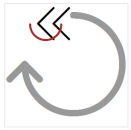
Also, lines could be thinned, and on electronic displays, the glyphs could be semi-transparent if desired. They could even go very transparent when hovering to allow for seeing all map detail under a glyph. On low tech paper maps or devices, thinning lines would suffice.
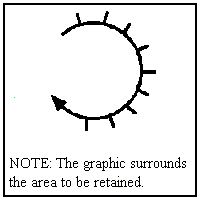 |
The glyph on the left indicates an area to be retained, apparently, kept. The Bliss glyph on the right expresses this meaning by containing  into the future into the future  . . |
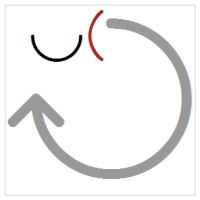 |
One of the benefits of simply adopting the Bliss system is that when improvising new glyphs or icons, you would only need significant cross domain research when you're thinking of breaking the elemental rules of the system for a certain glyph. Follow the rules and the glyphs can nearly always cross domains without conflict.
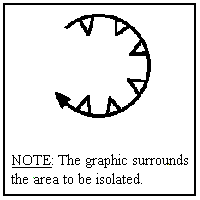 |
The "isolate" glyph on the left is probably fairly intuitive, and also consistent with Bliss, if the meaning is intended to imply an aggressive stance or activity towards those in that area so they can't interact with anyone or anything outside the area (thus effectively isolating them). The sharp points, like arrowheads or nose cones of a rocket, strongly imply attacking. In Bliss, the divide  glyph can be adapted (as on the right) to clearly imply only the meaning of "isolating" without the aggressive implication. The area to be isolated could be a civilian area. glyph can be adapted (as on the right) to clearly imply only the meaning of "isolating" without the aggressive implication. The area to be isolated could be a civilian area.
The protection glyph could be added to the isolate glyph when isolating for protection an area of non-combatants, as below. 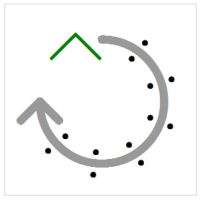
|
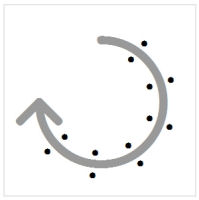 |
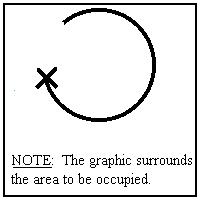 |
How does an "x" imply occupation? "X" marks the spot? But marks it for what? On a Fort Sill glyph further down this page, x means to destroy, fairly intuitive. But here it is either meaningless or confusing, probably taken out of thin air, adhoc. To occupy implies dwelling there, at least temporarily, so the Bliss glyph on the right communicates this with a "floorless" building  , a temporary shelter. Normally, the glyph for building , a temporary shelter. Normally, the glyph for building  has a floor. has a floor. |
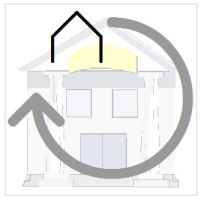 |
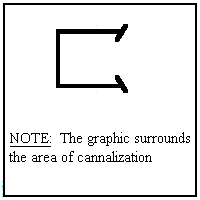 |
The (Fort Sill) canalization glyph on the left could be modified just a little to create a Bliss glyph which would be at least partially understood by someone from a completely unrelated military service or department, if a Bliss/Military glyph system were in use. The glyph on the right starts with the basic shape on the left, then substitutes the water glyph on the bottom, and the "lead or control" glyph on the top. Any fairly experienced Bliss user would immediately know the glyph is something about controlling (leading) water. And the specialists would learn the precise meaning just as they must anyway, but learning and remembering it would be easier in an integrated, elemental system. If desired, the canalization glyph on the left could be drawn with standard Bliss software and easily be adopted as a Bliss outline drawing because it happens to be composable (unintentionally) from standard Bliss graphic elements. In fact, my planned Bliss software would include 20 or 30 additional graphic elements so that any outline drawing and any diagram from virtually any visual language will be easily composable within the software. The additional elements will still have the geometric "feel" of the originals so they won't look out of place, they won't alter the simple geometric appearance of the Bliss system. But theoretically, the software could be used to create new and different visual languages unrelated to Bliss. |
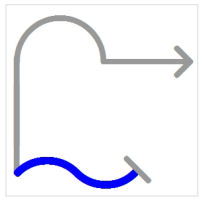 |
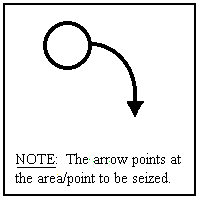 |
I suppose the glyph on the left is meant to imply "encircling" the area it points to, which would mean the seizing (taking) of the area, but in Bliss it would mean "talking down" and is very similar to "spitting". In an integrated elemental system, this should be cleared up. The Bliss glyph on the right means "to take" and conveniently, it also has an arrow which can be pointed to areas on a map. A Bliss user of average experience would recognize this meaning immediately. An arrow  pointing away from a bowl pointing away from a bowl  means "removing from the other guy's bowl", to take. means "removing from the other guy's bowl", to take. |
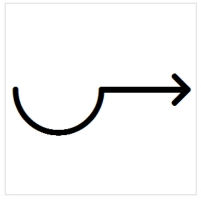 |
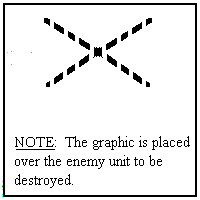 |
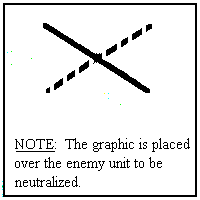 |
About
Contact
Symbols in The News
Interpret this Symbol
AAC
African
AI
Alchemy
Alphabets
Ancient
Animal Symbolism
Architecture
Art
Articles
Astrology
Baha'i
Blissymbolics
Blueprint Symbols
Buddhist
Celtic Symbols
Cemetery
Chinese Symbols
Christian
Circle
City
Codes
Color
Conlangs
Crop Circles
Danger
Da Vinci Code
Designing Logos
Dictionaries
Dreams
Education
Egyptian Symbols
Electrical
Emoticons
Find Images
Fonts
Food
Fraternity
Hamsa
Healing
Heraldry
Hermetic
Highway Signs
Hindu
History
Hobo
Holiday
Icons
iConji
Islamic
Jain Symbols
Japanese, Kanji
Jewish
Justice
Law
Literary Symbolism
Mandalas
Map
Masonic
Math, Number
Meaning of Names
Medical
Middle East
Military
Miscellaneous
Money
Music
Mythology
Native American
Playing Cards
Power
Psychology
QiQiiKhu
Reiki
Religious
Runes, Norse
Sacred Geometry
Scientific
Science Fiction
Sorority
Sports
Symbols in the News
Tattoos
ThirteenSymbols
Tree of Life
Ursprache
Videos
Visual Languages
Weather
Web Codes
Wicca
Words
Writing Systems
Braille
Coinherence
Coptic
Cuneiform
Easter Island
Etruscan
Happy Human
Hebrew
Kokopelli
Linear B
Lotus
Love Symbols
Mandorla
Moon Alphabet
Nine Pointed Star
Om
Oz
Phonetic
Scarab Beetle
Silent
Theosophy
Unifon
